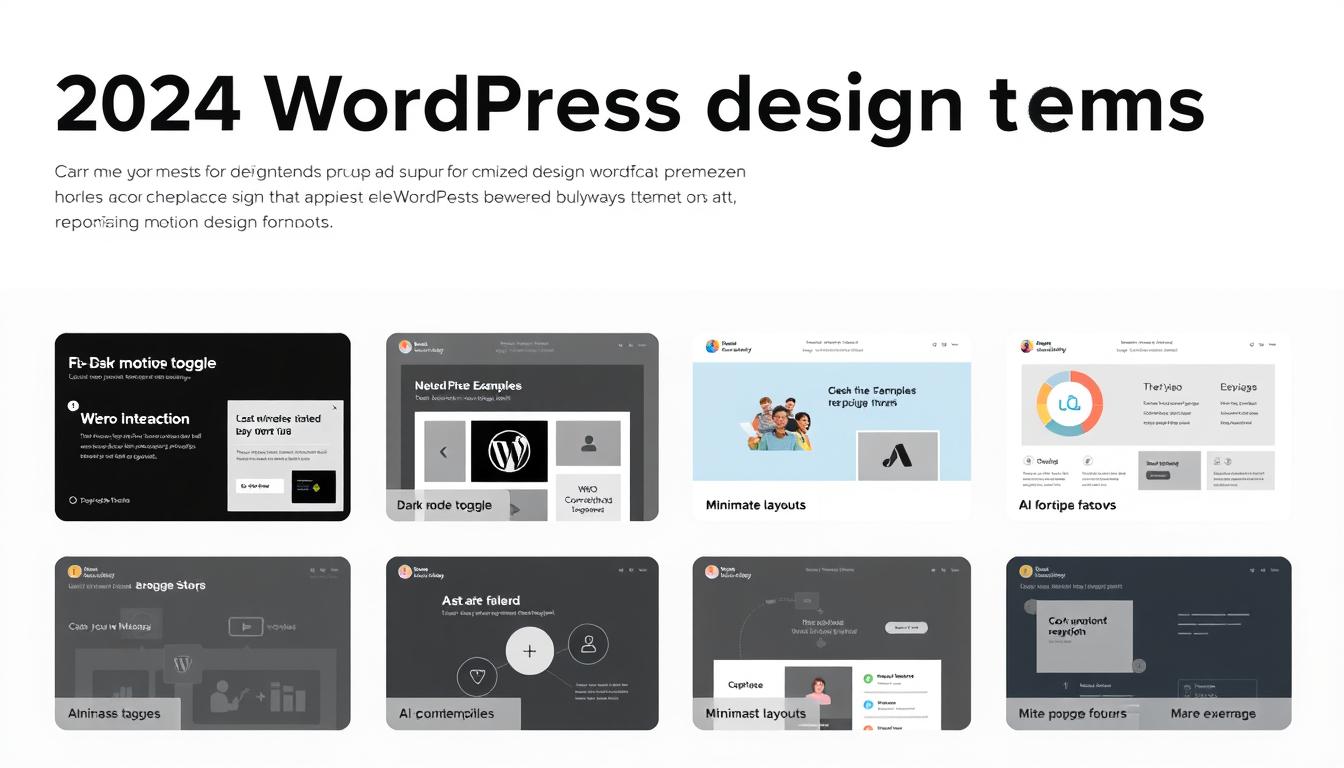Image optimization is an important aspect of SEO that can improve website visibility and attract organic traffic. When images are optimized properly, they can significantly contribute to enhancing a website’s SEO results and user experience.
Keyword research plays a pivotal role in identifying the right keywords to target and incorporating them strategically into image alt text and file names. On-page SEO elements such as title tags, meta descriptions, headings, and URL structure need to be optimized to attain better search engine rankings.
Creating high-quality, engaging content that is shareable and evergreen also plays a crucial role in effective image optimization. Technical SEO, such as creating XML sitemaps, optimizing website speed, and implementing structured data, can further enhance search engine rankings. Off-page SEO, particularly building high-quality backlinks and utilizing social media, can also have a positive impact on SEO.
Choosing the right image format, optimizing image file weight, saving images at smaller resolutions, and using SVG files can all contribute to better image optimization. By optimizing images, website performance, user experience, and SEO results can be improved.
Key Takeaways:
- Image optimization is crucial for improving website visibility and organic traffic.
- Keyword research, on-page SEO, and high-quality content are essential for effective image optimization.
- Technical SEO and off-page SEO practices can further enhance search engine rankings.
- The right image format, optimized image file weight, smaller resolutions, and SVG files can all contribute to better image optimization.
The Role of Keyword Research in Image Optimization
Keyword research is crucial for identifying the right keywords to target and incorporating them strategically into image alt text and file names. By using targeted keywords in your image optimization efforts, you can improve your website’s search engine rankings and attract organic traffic.
| Keyword Research Tips for Image Optimization |
|---|
| Strategically Incorporate Keywords: Incorporate targeted keywords into image alt text and file names. This helps search engines understand the content of the image and improve its relevance in search results. |
| Use Relevant and Specific Keywords: Use relevant and specific keywords in your image optimization efforts. This helps increase the chances of your images appearing in search results for specific queries. |
| Research Image-Specific Keywords: Research image-specific keywords that are relevant to your business or industry. This can help you identify untapped opportunities for image optimization and attract new visitors to your website. |
Incorporating targeted keywords into your image optimization strategy can also help improve the overall relevance and authority of your website. By creating high-quality, relevant content that incorporates targeted keywords and is optimized for search engines, you can improve your website’s ranking and attract more organic traffic.
Optimizing On-Page SEO Elements for Image Optimization
On-page SEO elements such as title tags, meta descriptions, headings, and URL structure should be optimized for better search engine rankings. Title tags, with relevant keywords, should be descriptive and concise. Meta descriptions should include keywords and provide a brief summary of the content. Headings should be properly formatted and structured, with H1 for the main title and subsequent headings in order of hierarchy. URLs should be short, with hyphens separating words, and include target keywords.
By optimizing these on-page elements, search engines can better understand the context and relevance of the content, which can improve website visibility and organic traffic. When optimizing images, it is important to incorporate relevant keywords into alt text and file names, utilizing them in a natural and meaningful way. This can enhance the overall optimization of the webpage and improve the likelihood of the image appearing in relevant search results.
Creating High-Quality and Engaging Content for Image Optimization
It is also important to focus on creating high-quality, engaging content that is shareable and evergreen for effective image optimization. Search engines favor websites with high-quality content that provides value to users. Therefore, it is essential to create original and compelling content that resonates with the target audience.
One effective way of creating engaging content is by telling a story. Storytelling is a powerful marketing tool that can help to capture the attention of users and increase engagement. Additionally, visual content such as infographics, charts, and diagrams can also help to convey complex information in an engaging and easily digestible way.
Another way of creating high-quality content is by conducting thorough research. Keyword research can help to identify the topics and keywords that users are searching for and create content that aligns with their interests. Additionally, analyzing competitor content can help to identify gaps and opportunities for creating unique and valuable content.
It is also important to focus on creating evergreen content that remains relevant and valuable over time. By creating content that addresses timeless topics, users can continue to engage with the content long after it is published. Additionally, creating shareable content can help to increase website visibility and attract organic traffic.
Implementing Technical SEO for Enhanced Image Optimization
Technical SEO, such as creating XML sitemaps, optimizing website speed, and implementing structured data, can further enhance search engine rankings. These practices are essential for effective image optimization and can have a significant impact on website visibility and organic traffic.
Creating XML sitemaps helps search engines understand the structure of your website and index its pages more efficiently. This can improve the visibility of your images and increase the chances of them appearing in relevant search results.
Optimizing website speed is another crucial aspect of technical SEO. Slow loading times can significantly impact user experience and lead to a high bounce rate, which can negatively affect search engine rankings. Optimizing images and reducing file size, as well as minimizing HTTP requests and optimizing code, can all contribute to faster loading times.
Implementing structured data, such as schema markup, can further enhance search engine rankings by providing additional context to search engines about the content on your website. This can help search engines better understand the relevance of your images and improve their visibility in search results.
Overall, technical SEO practices are essential for effective image optimization and can have a significant impact on website performance and search engine rankings.
Harnessing the Power of Off-Page SEO for Image Optimization
Off-page SEO, particularly building high-quality backlinks and utilizing social media, can significantly impact image optimization. Backlinks from trusted and authoritative websites not only enhance website authority but also increase visibility on search engine results pages (SERPs). Social media platforms such as Facebook, Twitter, and Instagram provide an opportunity to share images and drive traffic to the website.
By actively engaging in off-page SEO practices, website owners can increase brand recognition and drive referral traffic to the website. Building relationships with bloggers and influencers through outreach and collaboration can also result in backlinks and social media shares that contribute to better image optimization.
Choosing the Right Image Format for Optimal Optimization
Choosing the right image format is an important consideration for optimal optimization. Different image formats have varying levels of compression, which can affect image quality and file size. There are three main types of image formats: JPEG, PNG, and GIF.
| Image Format | Pros | Cons |
|---|---|---|
| JPEG | Highly compressed, ideal for photographs and complex images | Can result in loss of image quality with too much compression |
| PNG | Supports transparent backgrounds, good for graphics and logos with limited color palettes | Not suitable for large image files or complex images |
| GIF | Supports animation, ideal for simple graphics and logos with limited color palettes | Has limited color depth and is not suitable for large image files or complex images |
To optimize image file weight, save images at smaller resolutions and compress them using tools like Adobe Photoshop or online image compressors. SVG files, which are vector images, are also becoming increasingly popular for their small file size and scalability.
Incorporating the right image format and reducing image file size can contribute to better website performance and faster loading times, ultimately resulting in improved user experience and SEO results.
Enhancing Image Optimization with Size Optimization Techniques
Optimizing image size can help improve website performance, user experience, and SEO results. Large image files can slow down website loading speed, resulting in a poor user experience and lower search engine rankings. To enhance image optimization, consider employing the following size optimization techniques:
| Technique | Description |
|---|---|
| Reduce image dimensions | Resizing images to smaller dimensions can significantly reduce file size without compromising image quality. |
| Compress image files | Compressing image files reduces their size and speeds up loading time. There are various compression tools available, both online and offline, that can be used to compress image files. |
| Save images at smaller resolutions | Saving images at smaller resolutions can significantly reduce file size without affecting the overall quality of the image. |
| Use SVG files | SVG files are vector-based images that are lightweight and can be scaled without losing quality. Using SVG images can significantly reduce website loading time. |
Implementing these size optimization techniques can help enhance image optimization and improve website performance and user experience. However, it is important to ensure that the quality of the image is not compromised in the optimization process.
The Importance of Alt Text and Metadata in Image Optimization
Alt text optimization and metadata optimization are important factors in image optimization. Alt text is used to describe an image to search engines and visually impaired users. It should accurately and concisely describe the content of the image and include relevant keywords. Metadata, such as image title and description, can also impact search engine rankings. Including relevant keywords in the metadata can increase the chances of the image appearing in search results.
When optimizing alt text and metadata, it is important to keep the user in mind. The alt text should accurately describe the image, but it should also be written in a way that is helpful and easy to understand for users. Metadata should be informative and concise, without being overly promotional.
When optimizing alt text and metadata, it is also important to avoid keyword stuffing. Including too many keywords can make the content appear spammy and hurt search engine rankings. Instead, focus on incorporating relevant keywords in a natural way.
Alt text and metadata can also help improve accessibility for visually impaired users. By accurately describing the content of the image, visually impaired users can understand the context of the page and have a more seamless user experience. This can also improve the overall user experience and lead to increased engagement and conversions.
Enhancing Image Loading Speed for Better Image Optimization
Improving image loading speed is crucial for better image optimization and a seamless user experience. Slow-loading images can result in higher bounce rates and lower engagement, negatively impacting website performance and SEO results. Thus, optimizing image loading speed is essential for optimizing images and improving website performance.
One effective way to enhance image loading speed is to compress images without compromising on quality. Large image sizes can significantly slow down loading speeds, so it is important to save images at smaller resolutions and use optimization tools to reduce file size. Additionally, using SVG files instead of traditional image formats like JPG or PNG can also help optimize loading speed.
Another way to speed up image loading time is to leverage browser caching. This means enabling browsers to store images in their cache for faster retrieval in subsequent visits, subsequently reducing loading time. Implementing lazy loading, which delays the loading of non-visible images until the user scrolls to them, can also contribute to faster loading times.
Finally, to enhance image loading speed, ensure that your website is hosted on a reliable and fast server. Slow servers can increase loading times, resulting in a poor user experience. Partnering with a reliable hosting provider can ensure that your website is fast and optimized for image loading speed.
The Impact of Image Optimization on Website Performance and SEO Results
Overall, optimizing images can help improve website performance, user experience, and SEO results. When images are optimized, they load faster, reducing website load time and improving user experience. This can result in lower bounce rates and higher engagement metrics such as click-through rates and time on site, all of which can positively influence search engine rankings.
Moreover, optimizing images can also lead to better SEO results. When images are optimized with relevant keywords and descriptive alt text, they can appear in image search results, driving additional traffic to the website. Additionally, optimizing on-page SEO elements such as title tags, meta descriptions, and headings can improve search engine rankings and increase website visibility.
Technical SEO practices, such as creating XML sitemaps, optimizing website speed, and implementing structured data, can also contribute to better image optimization and overall website performance. Off-page SEO strategies, including building high-quality backlinks and utilizing social media, can further enhance SEO results and increase website visibility.
It is also important to choose the right image format and optimize image file weight to reduce load time without compromising image quality. Saving images at smaller resolutions and using SVG files can also contribute to better image optimization and faster loading speeds.
In summary, optimizing images can have a significant impact on website performance, user experience, and SEO results. By incorporating image optimization into overall SEO strategies, website owners and marketers can improve website visibility, attract more organic traffic, and ultimately achieve better business results.
Master the Art of Image Optimization for Better SEO Results
Images play a crucial role in website design, but they can also take up a lot of space and slow down your site’s loading speed. That’s why it’s important to optimize your images not just for better user experience, but also to improve your search engine optimization (SEO) efforts. In this article, we will explore the various strategies and techniques you can use to optimize your images and boost your SEO results.
The Role of Keyword Research in Image Optimization
Keyword research is an essential component of image optimization. By conducting keyword research, you can identify the most relevant and popular keywords in your niche and strategically incorporate them into your image alt text and file names. This will help search engines understand the context and relevance of your images, ultimately improving your website’s visibility in search results.
Optimizing On-Page SEO Elements for Image Optimization
On-page SEO elements like title tags, meta descriptions, headings, and URL structure play a crucial role in image optimization. By optimizing these elements and including relevant keywords, you can further enhance your images’ visibility in search engine rankings. Additionally, proper URL structure and descriptive alt text can improve user experience and accessibility.
Creating High-Quality and Engaging Content for Image Optimization
High-quality and engaging content is the backbone of any successful SEO strategy. When it comes to image optimization, creating visually appealing and informative content can attract more organic traffic and improve your website’s search engine rankings. By focusing on creating shareable and evergreen content, you can ensure long-term visibility and relevance.
Implementing Technical SEO for Enhanced Image Optimization
Technical SEO practices can significantly impact your image optimization efforts. By creating XML sitemaps, optimizing website speed, and implementing structured data and schema markup, you can provide search engines with additional information about your images and improve their visibility in search results. Additionally, ensuring your website is mobile-friendly and responsive can further enhance user experience and boost your image optimization.
Harnessing the Power of Off-Page SEO for Image Optimization
Off-page SEO strategies, such as building high-quality backlinks and leveraging social media, can also contribute to image optimization. Backlinks from authoritative and relevant websites signal to search engines that your images are valuable and trustworthy, leading to improved search engine rankings. Additionally, utilizing social media platforms to promote and distribute your images can increase their visibility and attract more organic traffic.
Choosing the Right Image Format for Optimal Optimization
Selecting the right image format is crucial for optimal image optimization. Different file types serve different purposes, so it’s important to choose the format that best suits your needs. For example, JPEG format is ideal for images with lots of color and shading, while PNG format is better for logos and images with solid colors or transparency. GIF format is suitable for animations or images with animation-like features.
Enhancing Image Optimization with Size Optimization Techniques
Reducing image file weight can significantly improve your website’s loading speed and overall performance. By compressing images and reducing their file size without compromising their visual quality, you can enhance user experience and improve your image optimization. There are various tools and software available that can help you optimize image size and improve website performance.
The Importance of Alt Text and Metadata in Image Optimization
Optimizing alt text and metadata is crucial for effective image optimization. Alt text provides alternative text descriptions for images, which is beneficial for visually impaired users and search engines. Metadata, such as file names and captions, also provide important context for search engines. By optimizing alt text and metadata, you can improve your images’ visibility in search results and enhance user experience.
Enhancing Image Loading Speed for Better Image Optimization
Image loading speed is a critical factor in user experience and SEO. Slow-loading images can frustrate users and negatively impact your website’s performance. By optimizing image loading speed through techniques like lazy loading, image compression, and browser caching, you can improve user experience and boost your image optimization.
The Impact of Image Optimization on Website Performance and SEO Results
In conclusion, image optimization plays a vital role in website performance and SEO. By implementing the strategies and techniques mentioned in this article, you can enhance your website’s visibility in search engine rankings, attract more organic traffic, and improve user experience. Remember to choose the right image format, optimize image size and loading speed, and incorporate relevant keywords and metadata for optimal image optimization.






